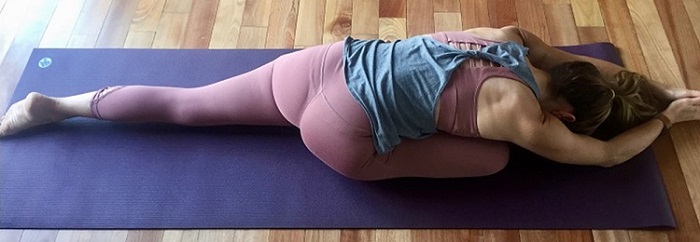

By Shannon McQuaide
Recently, I was in a meeting with city officials and fire administration. During this meeting, I explained how specific yoga practices “light up” a part of the brain that is responsible for empathy and interoception—the ability to feel and identify sensation in the body. It turns out that both of these capabilities are important for firefighters. But there is also a “Catch-22.” The part of the brain that is responsible for interoception is vulnerable to shutting down in individuals who are exposed to traumatic stress, like firefighters.
At one point in the meeting, one of the attending firefighters interjected that he does not allow himself to empathize. He has concluded that allowing himself to feel the suffering he sees daily would consume him and weaken his ability to provide the help and support that is his professional responsibility. He shared that shutting down his ability to empathize comes with a high price—he no longer feels suffering as acutely, but he also feels more disconnected from every day sensory experiences like music, touch, and tasting a delicious meal; feelings that imbue life with meaning.
On the drive home from my meeting, I thought about this firefighter’s powerful admission. Based on my years of experience teaching yoga in fire stations, I wondered how many other firefighters might stop empathizing to survive their profession.
When I first started teaching yoga to firefighters, I focused on the body and emphasized yoga’s ability to heal tissues, blood, and bones. This was a successful approach because many firefighters could feel a difference in their backs and shoulders following a yoga class. Gradually, they began to equate yoga class with less physical pain.
But our tissues also hold the memory of our life experiences. The research is pretty conclusive that our tissues, blood, and bones store the narratives and traumas of our lives (see https://www.psychologytoday.com/blog/somatic-psychology/201004/the-connections-between-emotional-stress-trauma-and-physical-pain). Yoga is a practice that can heal both body and mind.
If experiences in our life were particularly painful, complex, or traumatic and we were not allowed to discharge that energy or we didn’t have the skills to let it go, painful memories were lodged in our viscera. Inhabiting our body becomes uncomfortable and, in some cases, intolerable. To cope, we disconnect.
What happens when disconnection makes subtle sensations difficult to feel? In working with firefighters, I’ve learned that many of them engage in extreme sports and high-risk activities. The effects of adrenaline on the heart, muscles, and breath are at least “feelable.” And let’s not forget the type of extreme sensation that accompanies a fireground operation.
How can firefighters, who are frequently exposed to extreme sensations, remain open without becoming overwhelmed and incapable of fulfilling their professional responsibilities?
One of the main goals of yoga is to help people to increase their interoceptive awareness by inhabiting their bodies and learning how to detect sensation. Information we receive from the body through interoception is translated to our awareness so that we can get our needs met. Interoceptive information allows us to nourish our bodies when we are hungry and not mistake anxiety for hunger. Interoception allows us to navigate life safely.
Through yoga practice, firefighters begin to tolerate physical sensations for what they are—just sensations. These sensations exist in the present and have a beginning, middle, and end. For example, hip-opening postures generate sensation in the body that’s hard to ignore. So, when I bring firefighters into the pigeon pose (see photos) with a strong externally rotated hip, I can see the muscles on their face, neck, and throat begin to tighten. I guide them to breathe deeply and notice the transitory nature of the sensation and what feelings arise. I let them know we will be in a pose for a specific amount of time, such as six breaths or one minute, so they can anticipate the end of discomfort and strengthen their capacity to be with difficult sensations.
For firefighters, learning how to feel these strong physical and emotional sensations on the mat can translate to learning how to experience strong sensations on the job without compromising performance or disconnecting from their lives.
 Shannon McQuaide is a registered yoga instructor with Yoga Alliance and the founder of the FireFLEX YogaTM program. FireFLEX Yoga was developed through her work with the San Jose (CA) Fire Department, where she continues to lead FireFLEX Yoga classes. She is a certified functional movement trainer and has a master of arts degree in leadership and psychology. Shannon@fireflexyoga.com http://www.fireflexyoga.com.
Shannon McQuaide is a registered yoga instructor with Yoga Alliance and the founder of the FireFLEX YogaTM program. FireFLEX Yoga was developed through her work with the San Jose (CA) Fire Department, where she continues to lead FireFLEX Yoga classes. She is a certified functional movement trainer and has a master of arts degree in leadership and psychology. Shannon@fireflexyoga.com http://www.fireflexyoga.com.

